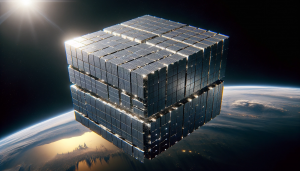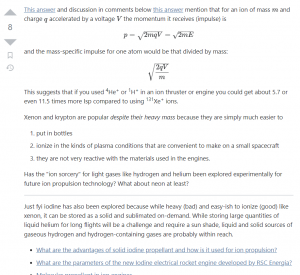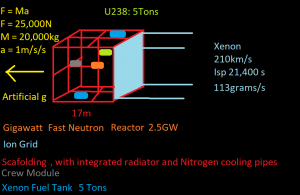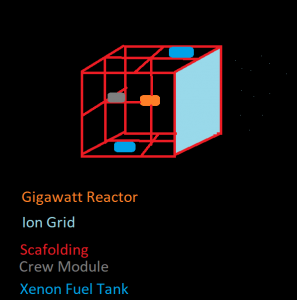Dual Stage Ion Drives – New Mars Forums Discussions:
https://newmars.com/forums/viewtopic.php?id=10491

UPDATE:
The following article makes a big case to building a hydrogen based ion drive:

There are signs of technology suppression by global powers of the dual grid 2 stage ion drive technology that was being jointly developed between ESA and Australia. The lead scientist has mysteriously passed away over suspicious circumstances just when the team was making head way.
https://en.wikipedia.org/wiki/Dual-Stage_4-Grid
https://en.wikipedia.org/wiki/Small_modular_reactor
The numbers supplied by wikipedia:
Power: 250kW
Isp: 19,000s
Diameter: 2.5m
The theoretical scaled up numbers above if valid would mean significant capabilities for space travel in the future. I came up with a cubic shape configuration for an interstellar space craft to maximize the surface area of any ion drive exhaust either as a single gigantic engine or a grid array of smaller units. Solar would also be able to take advantage of the nature of the cube to maximize solar radiation intake to maximize solar power.
These numbers would mean that a space craft such as my design only 17m by 17m with conservative numbers for a gigawatt reactor would be able to get to Mars in weeks and Titan in months. The greatest challenge to this design would be to minimize the weight of a 2.5gigawatt reactor and make it be 5-10 tons. This is the greatest challenge. The surface sides of the cube will be able to house panels that can efficiently radiate the reactor waste heat.
Alternatively we can completely eliminate the reactor and just rely on solar which definitely will make this endeavor possible for Mars alone. Without the reactor the entire ship will be 5-10 tons lighter boosting it’s acceleration capabilities and bringing it’s entire mass down to 10 tons.



